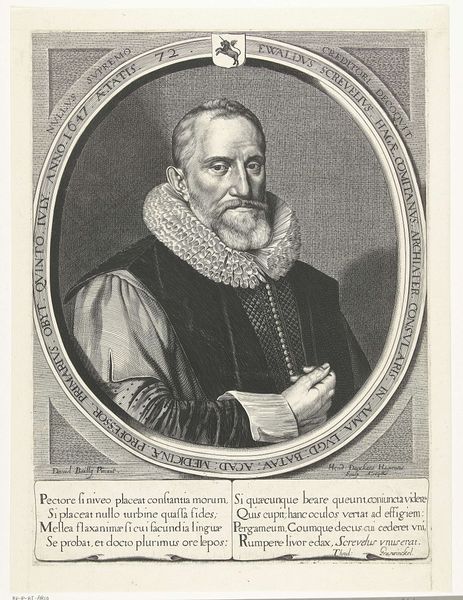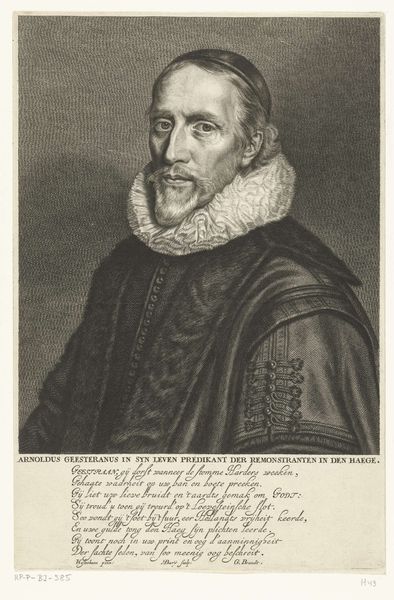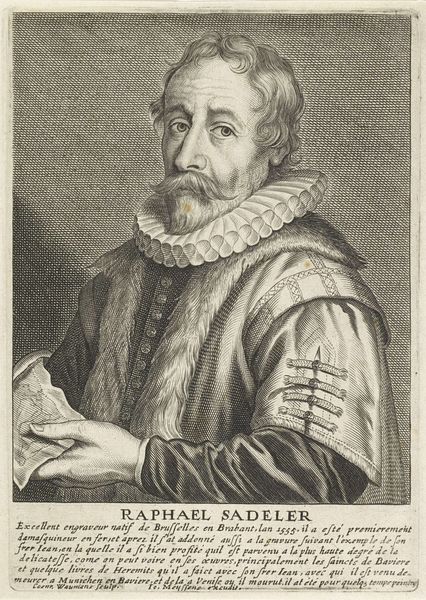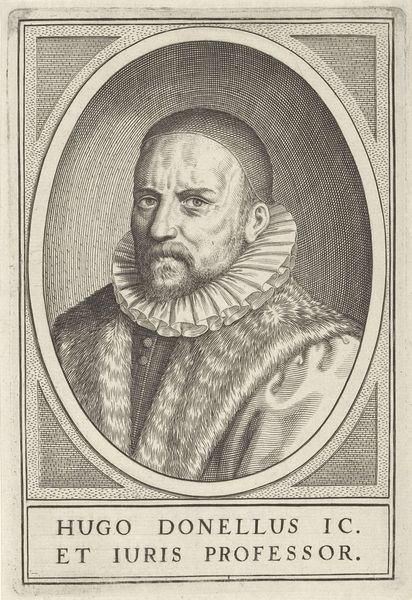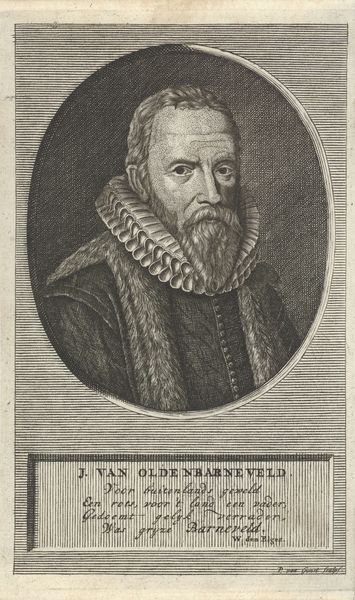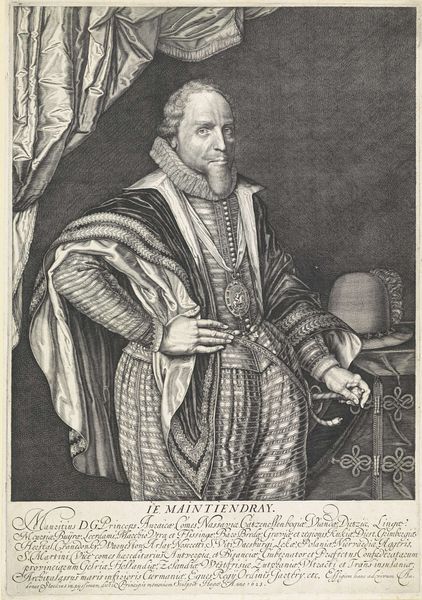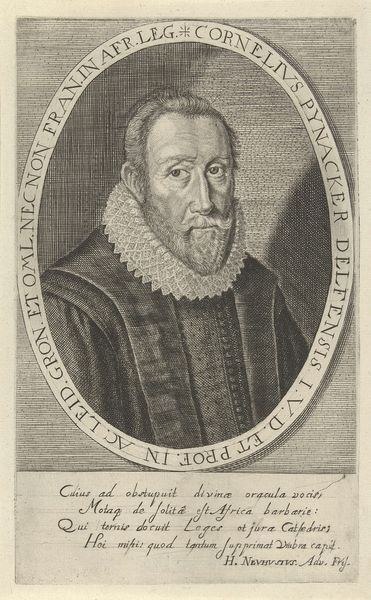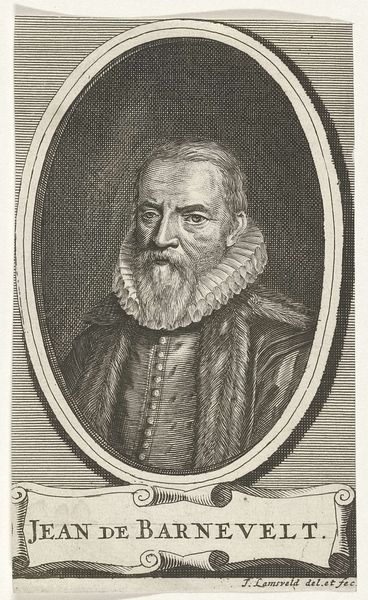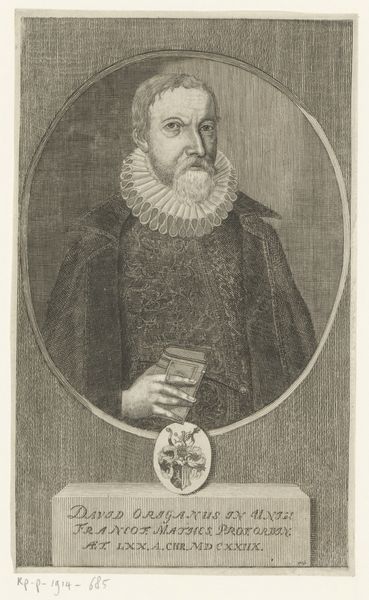
engraving
#
portrait
#
baroque
#
dutch-golden-age
#
engraving
Dimensions: height 290 mm, width 198 mm
Copyright: Rijks Museum: Open Domain
Editor: Here we have a fascinating engraving at the Rijksmuseum, “Portret van Johan van Oldenbarnevelt,” created sometime between 1619 and 1650 by Crispijn van de Passe the Younger. The stark contrasts immediately convey a sense of solemnity, even severity. What do you see when you look at this portrait? Curator: The weight of history, Editor. Look closely at Oldenbarnevelt's attire. The elaborate ruff and fur-lined robes aren’t just fashion; they are potent symbols of status and power within the Dutch Republic. His gaze is direct, unflinching – intended to project strength and authority. But consider the timing. This engraving appeared after his execution. Do you think that the image tries to subtly rewrite his narrative, framing him in a more favorable, even martyred, light? Editor: That’s an interesting perspective. I hadn't considered the timing in relation to his death. So, the visual language almost functions as a kind of propaganda? Curator: Precisely! Notice the inscription below the portrait, written in Dutch. This further emphasizes a very specific perspective, aiming to shape the viewer's emotional and intellectual response to Oldenbarnevelt and the political turmoil surrounding his life and death. We aren’t simply looking at a picture, but engaging with a carefully constructed argument. How does understanding that affect your interpretation of the image? Editor: It definitely makes me question everything I initially assumed. The artist’s intention, the patron's motives... It's much more complex than just a record of someone's appearance. Curator: Indeed. And that’s the power of imagery. It can simultaneously reflect and reshape cultural memory. Seeing this image helps us better understand not only the individual depicted, but also how societies grapple with complex historical figures.
Comments
No comments
Be the first to comment and join the conversation on the ultimate creative platform.



